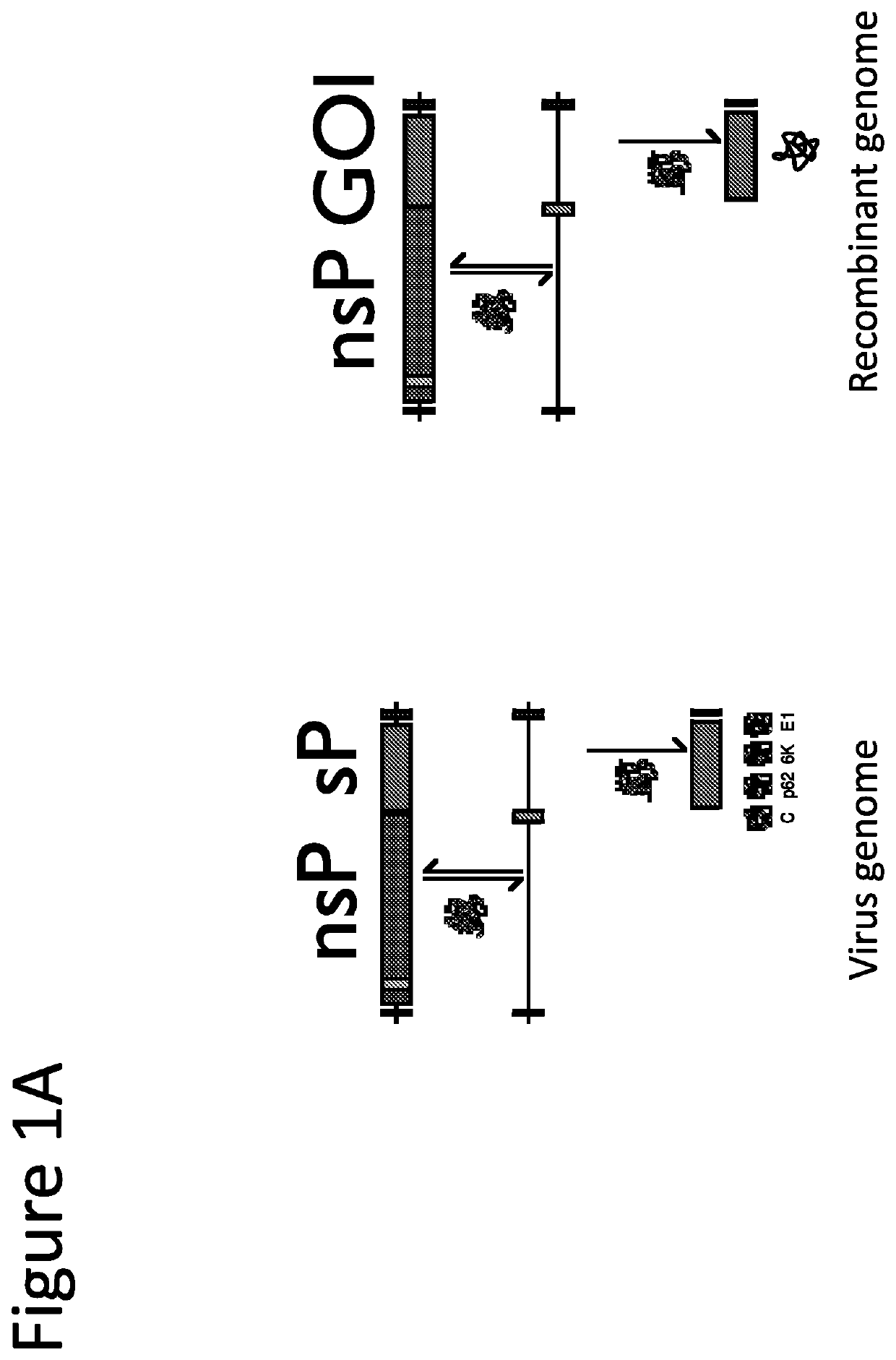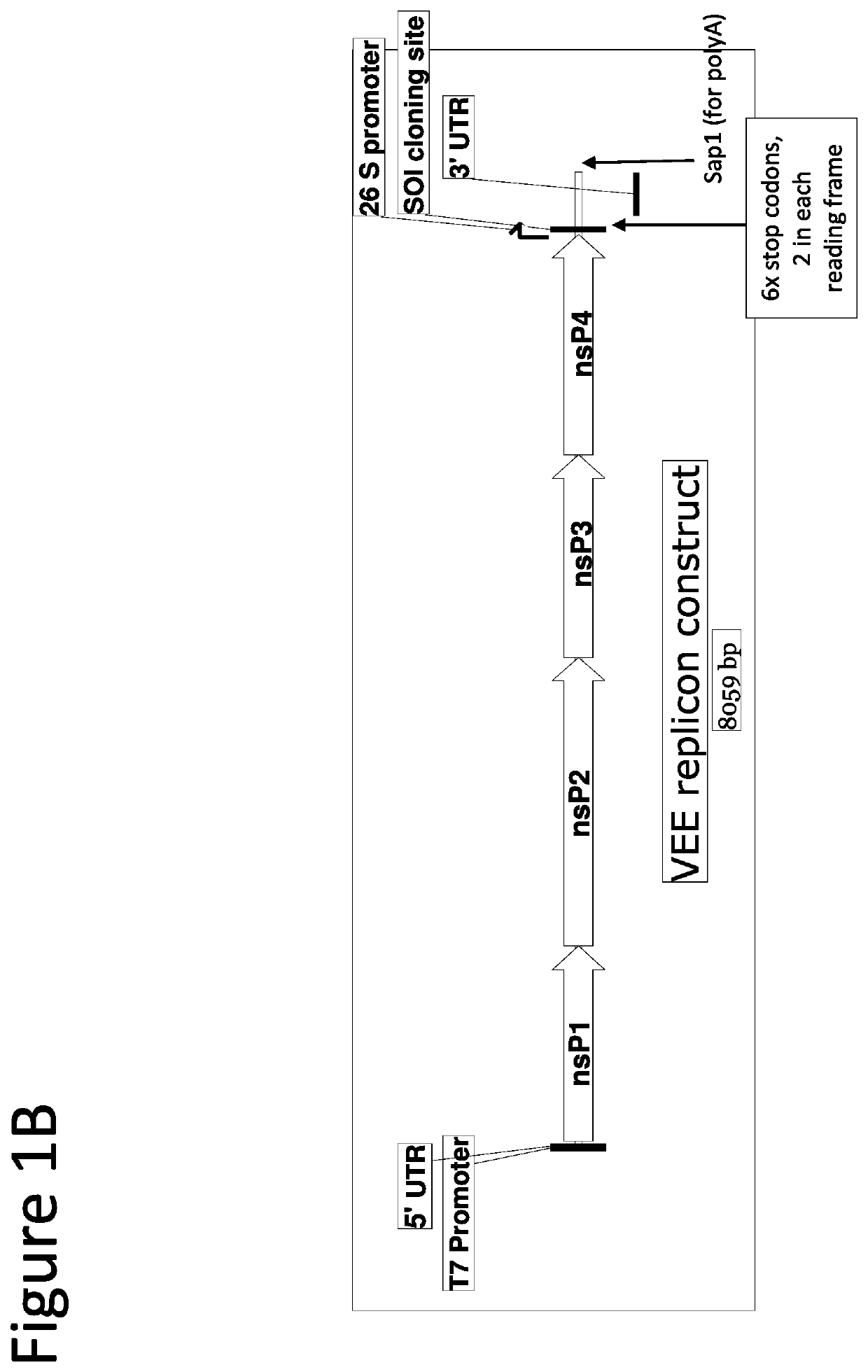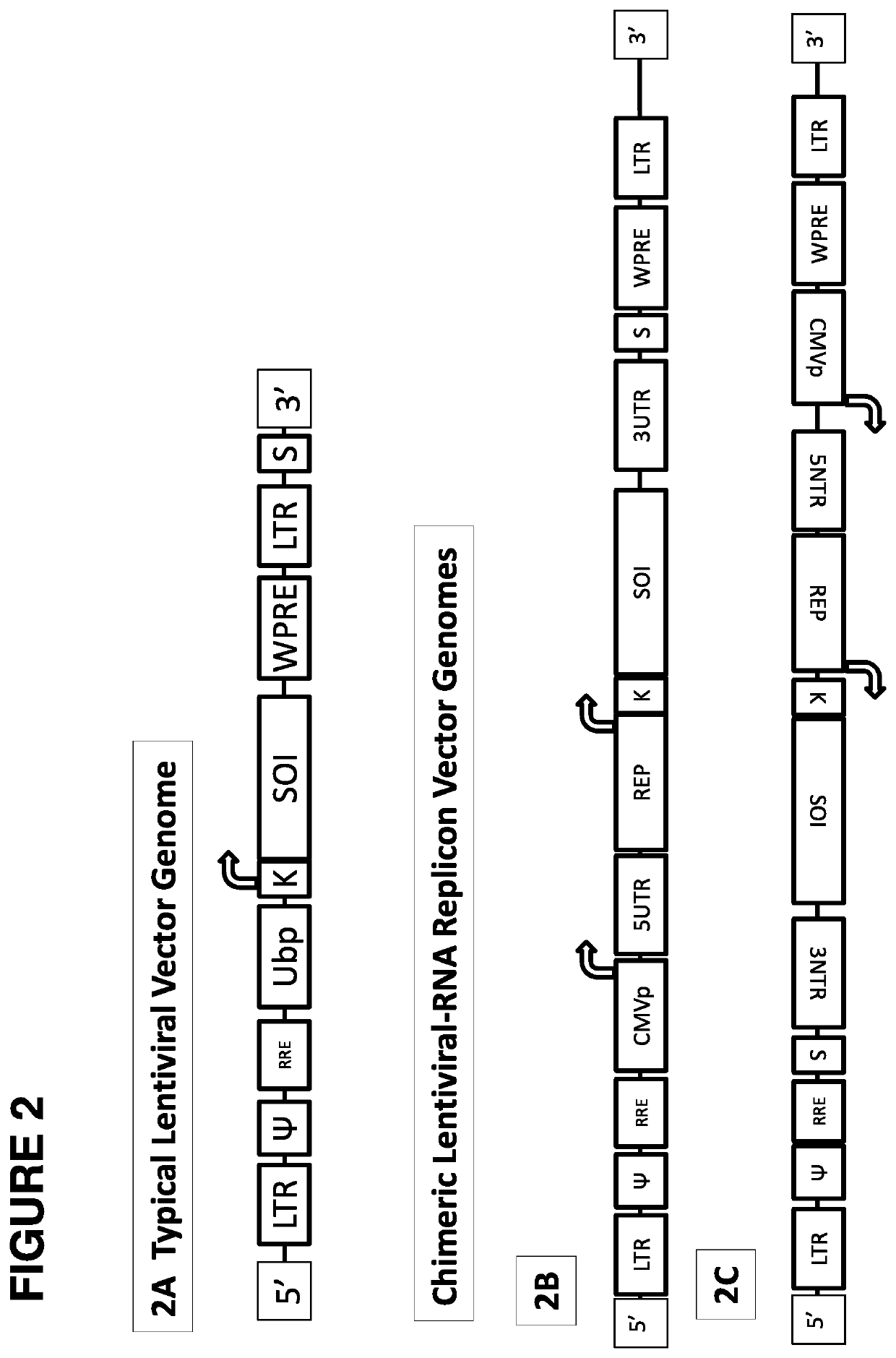A retroviral vector for the administration and expression of replicon RNA expressing heterologous nucleic acids
- Summary
- Abstract
- Description
- Claims
- Application Information
AI Technical Summary
Benefits of technology
Problems solved by technology
Method used
Image
Examples
example 1
Engineering of a Chimeric Lentiviral-RNA Replicon Vector
[0241]This example describes the cloning strategy for constructing a chimeric lentiviral-RNA replicon vector.
[0242]The alphaviral genome functions directly as an mRNA, is 5′-capped and 3′ polyadenylated. Replication of the alphavirus self replicating RNA yields high levels of a shorter, sub-genomic RNA species derived from the 3′ end of the RNA and driven from the 26S RNA dependent RNA polymerase promoter. The sub genomic RNA nucleotide sequence is translated at extremely high levels (up to 20% of total cell protein).
[0243]The starting lentiviral vector genome has been described previously (Molecular Therapy vol. 22 no. 3, 575-587, 2014). The alphaviral sequences (5′UTR, nonstructural proteins, 26S promoter, and 3′UTR sequences) were derived from GenBank accession number L01443.1, Venezuelan equine encephalitis virus strain TC-83 (attenuated). An illustrative wild type alphavirus sequence is provided in SEQ ID NO:1.
[0244]Two cl...
example 2
Preparation of a Chimeric Lentiviral-RNA Replicon Vector Particle Comprising a Sindbis Virus E2 Envelope Glycoprotein Variant
[0245]Using a packaging system similar to that outlined in FIG. 3, where the envelope protein was a modified Sindbis virus E2 envelope protein as described previously (see e.g. (Molecular Therapy vol. 22 no. 3, 575-587, 2014; U.S. Pat. No. 8,187,872), chimeric lentiviral-RNA replicon vector particles encoding the GFP reporter protein were produced in 293T producer cells expressing DC-SIGN. As shown in FIG. 6, the chimeric LV-replicon constructs were able to transduce 293T cells expressing DC-SIGN. Nevirapine only partially reduced LV-replicon transductions. As shown in FIG. 7, the GFP expression level (mean fluorescence intensity) in LV-replicon infected cells is about 10 to 50 fold higher than the mean fluorescence intensity of the parent lentiviral vector (Parent LV-704-GFP: see e.g., FIG. 2A; also as described in U.S. Pat. No. 8,187,872); 704-VEE-GFP-5′-3′:...
example 3
Engineering of Functional RNA Replicon Vectors Containing RNA Packaging Signal
[0248]This Example describes various strategies for engineering an alphavirus replicon-encoding sequence that has a HIV packaging signal to direct selective packaging of fully functional RNA replicon genomes.
[0249]As has been shown previously a semliki forest virus (US20080118956) or a sindbis virus replicon (US2015050243) can be passively encapsidated into a virus particle having a retroviral envelope even when the RNA sequence does not contain a specific packaging signal. It is generally understood that the inclusion of a packaging signal results in selective encapsidation of an RNA transcript and, thus, a larger number of produced virus particles containing the RNA of interest.
[0250]It is not obvious how an alphavirus replicon genome can be engineered to successfully contain a retro or lentiviral packaging signal. While sequences can readily be inserted downstream of the sequence of interest (SOI) but u...
PUM
| Property | Measurement | Unit |
|---|---|---|
| Current | aaaaa | aaaaa |
| Digital information | aaaaa | aaaaa |
| Therapeutic | aaaaa | aaaaa |
Abstract
Description
Claims
Application Information
 Login to View More
Login to View More - R&D Engineer
- R&D Manager
- IP Professional
- Industry Leading Data Capabilities
- Powerful AI technology
- Patent DNA Extraction
Browse by: Latest US Patents, China's latest patents, Technical Efficacy Thesaurus, Application Domain, Technology Topic, Popular Technical Reports.
© 2024 PatSnap. All rights reserved.Legal|Privacy policy|Modern Slavery Act Transparency Statement|Sitemap|About US| Contact US: help@patsnap.com










